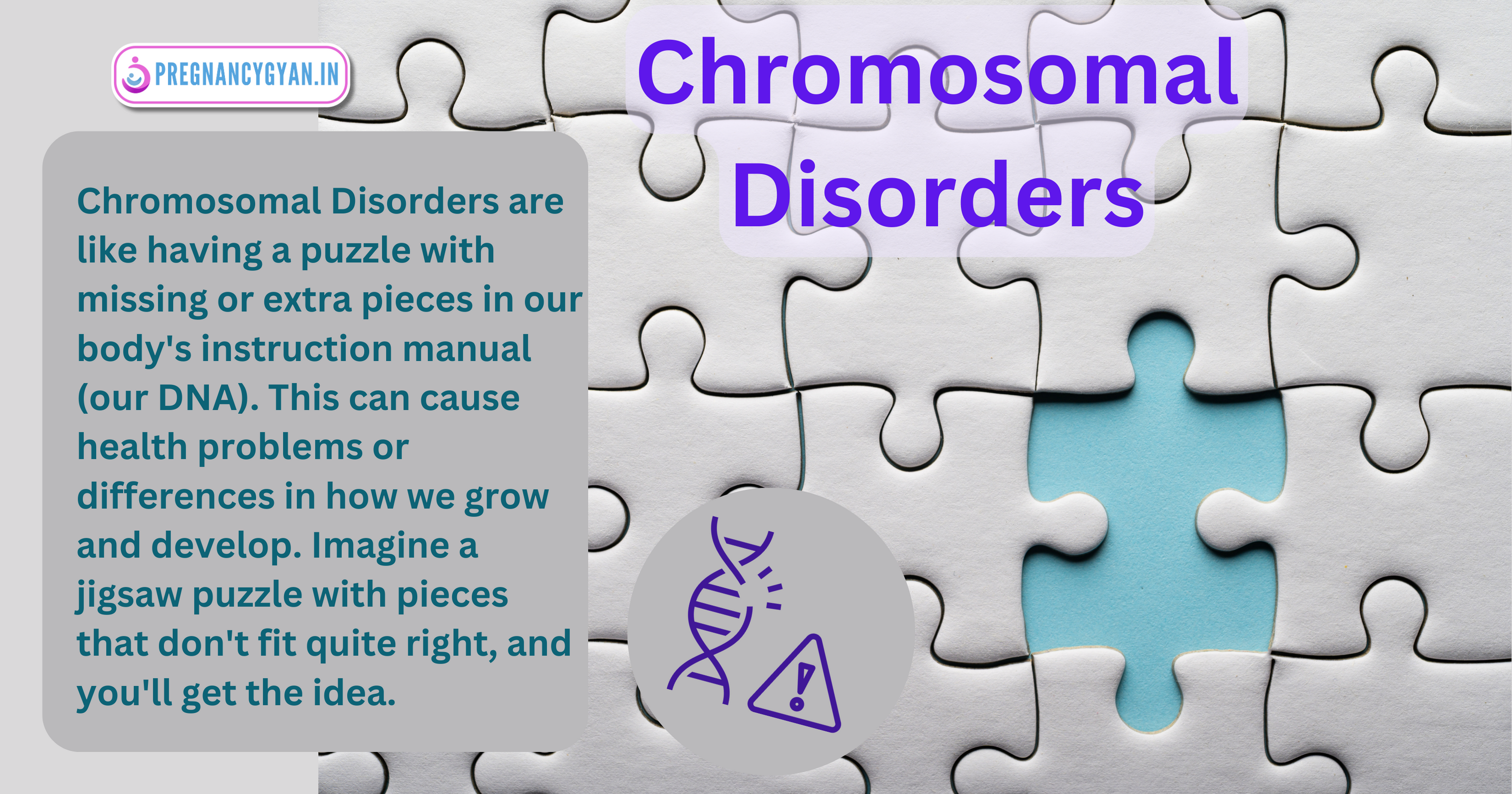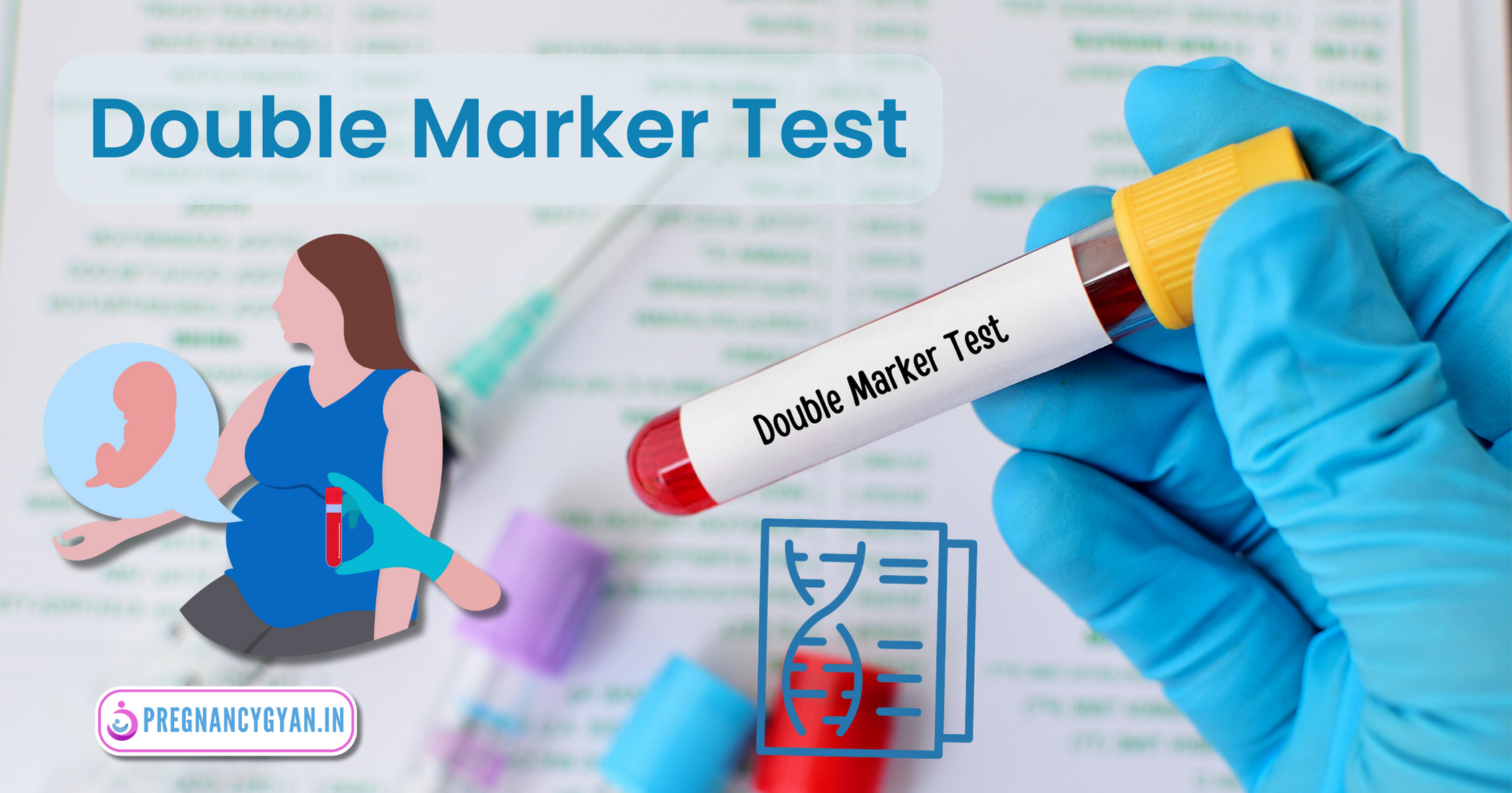इस ब्लॉग को हिन्दी मे पढ़ने के लिए यहाँ क्लिक करे।
Table of Contents
Introduction
‘Double Marker Test’ is a vital diagnostic tool in the field of prenatal care in Pregnancy. Double Marker Test in Pregnancy provides Important information concerning the possibility of chromosomal problems for the unborn child. In this comprehensive guide, we will learn about the Double Marker Test, its importance, the process involved and its benefits.
What is Double Marker Test ?
The Double Marker Test is a test done during Pregnancy that helps identify the risk of certain Chromosomal Abnormalities (such as Down’s syndrome) in the baby growing in the mother’s womb. It is usually done between 11 and 14 weeks of pregnancy. This test combines two key parameters: the Age of the pregnant woman and specific Biochemical Components present in the pregnant woman’s blood.
What is Chromosomal Disorder ?
Chromosomal Disorders are like having a puzzle with missing or extra pieces in our body’s instruction manual (our DNA). This can cause health problems or differences in how we grow and develop. Imagine a jigsaw puzzle with pieces that don’t fit quite right, and you’ll get the idea.

In Chromosomal Disorders, various types of changes occur in the chromosomes of the human body, which cause various disorders such as Down’s syndrome, trisomy 18, trisomy 21. In these disorders the child is mentally underdeveloped and the physical development of the child is not normal. Children born with such disorders need Special care.
What is the Risk of Chromosomal Anomalies in Pregnancy?
The risk of chromosomal disorders is linked to the mother’s age. 1 child in 500 children of the youngest mother, 1 child in 270 children of the mother aged 30 years, 1 child in 80 children at the age of 35 years, 1 child in 60 children at the age of 40 years. , and at the age of 45, 1 in 20 children are likely to have a chromosomal disorder. (Reference: National Library of Medicine)
Why is the double marker test important?
The double marker test is an important test to determine whether a child is at risk for chromosomal disorders, particularly Down syndrome (trisomy 21) and Edwards syndrome (trisomy 18). If the risk of chromosomal disorders in the unborn child is high, then to diagnose chromosomal disorders, some more tests like chorionic villus sampling, amniocentesis are required. If the child is diagnosed with a chromosomal disorder in this test, then the parents have the option to abort the child.
Who Should Consider the Double Marker Test?
The Double Marker Test is recommended for all pregnant women, regardless of age. However, it is especially advisable for.
- Women 35 years of age or older.
- Women who have had a previous child with a chromosomal disorder.
- Women who has a family history of genetic disorders.
- There have been few abnormal findings on ultrasound of the baby at 11-13 weeks.
How is the Double Marker Test Performed?
The double marker test involves a simple blood draw from the mother’s arm. The blood sample is then sent to a laboratory, where it is analyzed to measure the levels of two substances: Human Chorionic Gonadotropin (hCG) and Pregnancy Associated Plasma Protein A (PAPA A). These markers are used to determine the risk of Chromosomal Disorders along with the mother’s age.
Understanding the Double Marker Test Report
The results of the double marker test are usually provided as a Risk Score or Probability. A result with a Low Risk score indicates a lower chance of the child having a chromosomal disorder. It is shown as Low Risk or Screen Negative. Whereas high risk results are shown in reports as High Risk or Screen Positive. It is important to note that the Double Marker Test does not provide a definitive diagnosis, but helps identify high-risk pregnancies. High Risk or Screen Positive reports require further testing, such as Chorionic Villus Sampling (CVS) or Amniocentesis which provide definitive diagnosis of Chromosomal Disorders.

Benefits of the Double Marker Test
The double marker test offers following benefits:
- Early detection: The double marker test can identify pregnancies at higher risk for chromosomal disorders early in pregnancy, helping parents make decisions about further testing and to continue or to terminate pregnancy if test report come positive.
- Non-invasive: Double marker test is a non-invasive test which does not pose any risk to the mother or the baby.
- Less need for invasive testing: Identifying low-risk pregnancies helps reduce unnecessary invasive testing, such as amniocentesis and chorionic villus sampling which has higher risk of complications.
- Mental Satisfaction: Receiving a low-risk result from a double marker test provides emotional reassurance to prospective parents and reduces anxiety about possible chromosomal disorders.
Double Marker Test Price
The cost of a Double Marker Test in India can vary widely depending on the city, the diagnostic center or hospital, and other factors. On average, it may range from approximately Rs. 1,000 to Rs. 3,000 or more. However, prices can fluctuate, and it’s essential to check with specific healthcare facilities or diagnostic centers in your location for the most up-to-date pricing information.
Conclusion
The Double Marker Test is a useful noninvasive test that helps determine the risk of chromosomal disorders in a developing fetus. By combining the mother’s age and specific biochemical markers, this test provides important information that helps future parents decide whether to undergo further invasive testing and to continue or abort pregnancy if the test is positive. It is important to consult your doctor or gynecologist for the Double Marker Test in the context of individual pregnancy
Frequently Asked Questions
What is a Double Marker Test?
A Double Marker Test is a prenatal screening test used during pregnancy to assess the risk of certain chromosomal abnormalities, such as Down syndrome and Edwards syndrome. It involves measuring two specific proteins in the mother’s blood, along with other factors like age, to provide an estimate of the likelihood of these genetic conditions in the unborn baby. This test helps expectant parents make informed decisions about their pregnancy and potential further diagnostic tests if needed.
How to read Double Marker Test report?
To read a Double Marker Test report, focus on two key markers: PAPP-A and β-hCG levels. If both markers fall within the normal range, the risk of chromosomal abnormalities is low. Elevated levels of these markers may indicate a higher risk, requiring further evaluation. Consult with a healthcare provider to interpret the results accurately and discuss any necessary follow-up tests or actions.
How Double Marker Test is done?
During a Double Marker Test, a healthcare professional takes a blood sample from the pregnant woman, usually between the 9th and 13th weeks of pregnancy. The sample is then analyzed to measure the levels of two specific proteins: PAPP-A (Pregnancy-Associated Plasma Protein-A) and β-hCG (beta-human chorionic gonadotropin). These measurements, along with the woman’s age, help assess the risk of certain chromosomal abnormalities in the developing fetus.
Why Double Marker Test is done?
The Double Marker Test is performed during pregnancy to assess the risk of specific chromosomal abnormalities in the developing fetus, notably Down syndrome (Trisomy 21) and Edwards syndrome (Trisomy 18). It helps expectant parents make informed decisions about their pregnancy, including the option for further diagnostic tests or interventions if the test results indicate an increased risk.
What happens if Double Marker Test is positive?
If the Double Marker Test returns a positive result, indicating an increased risk of chromosomal abnormalities, it does not confirm the presence of these conditions. However, it suggests a higher likelihood, prompting healthcare providers to recommend further diagnostic tests such as Amniocentesis or Chorionic Villus Sampling (CVS) to obtain a definitive diagnosis. Expectant parents should consult with their healthcare team to discuss the results and decide on the best course of action for their pregnancy.
What is the normal result of Double Marker Test?
A normal result of the Double Marker Test typically indicates that the levels of PAPP-A (Pregnancy-Associated Plasma Protein-A) and β-hCG (beta-human chorionic gonadotropin) in the pregnant woman’s blood fall within the expected range for her gestational age. This suggests a lower risk of certain chromosomal abnormalities in the developing fetus, providing reassurance to expectant parents about the health of their pregnancy. However, it’s important to remember that the test only provides a risk assessment and not a definitive diagnosis.
Can Double Marker Test detect gender of baby?
No, the Double Marker Test cannot predict the gender of the fetus. This test is primarily used to assess the risk of certain chromosomal abnormalities in the developing fetus, such as Down syndrome and Edwards syndrome. Gender determination typically requires a different type of prenatal test, such as a fetal ultrasound or non-invasive prenatal testing (NIPT), which can reveal the baby’s gender but are separate from the Double Marker Test.
Note: Prenatal Sex determination is prohibited in India under PCPNDT Act.
Is Double Marker Test compulsory?
The Double Marker Test is not compulsory for all pregnant women. It is typically offered as an optional screening test during pregnancy to assess the risk of chromosomal abnormalities in the fetus. Whether to undergo this test is a personal choice made by expectant parents based on their preferences and medical advice. It is not mandated by law and depends on individual circumstances and healthcare recommendations.


1 thought on “Double Marker Test”